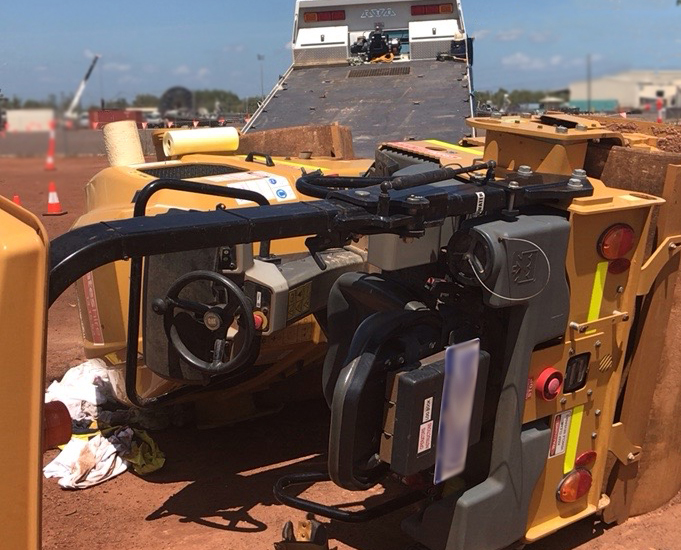Risks associated with unloading heavy machinery from tilt tray trucks
The purpose of this Safety Alert is to highlight the risk of serious crush injuries when unloading heavy machinery from tilt tray trucks when safety equipment is available but not used.
Background
A worker at an East Arm worksite sustained serious crush injuries while attempting to reverse a 2.7 tonne utility compactor off a tilt tray truck.
The compactor, which operates on two metal drums, was being unloaded when it lost traction and toppled onto its side. The worker was pinned under the roll over protection frame, causing multiple injuries to their lower body.
Possible contributing factors
- A risk assessment was not conducted prior to the unloading of the compactor and a safe work procedure for this type of work was not in place.
- The winch fitted to the tilt tray truck was not used during the unloading.
- The compactor’s metal drums may not have had enough traction on the tilted metal tray to prevent it from sliding
- The tilt tray was also wet due to the overnight rain, reducing the level of friction compactor’s metal drums had on the tilt tray.
Action required
- Ensure a risk assessment is carried out before commencing any work, especially if conditions (including environmental conditions) in the workplace have changed.
- Ensure safe work procedures are developed in consultation with workers.
- Ensure workers are provided appropriate training, instruction, information and supervision to understand and use the safe work procedures.
- Always use the provided equipment and mechanical systems to load and unload unmanned machinery.
- If the manufacturer's instructions allows the machinery to be operated during loading and unloading, have another person operate the winch the same time as the machinery is driven on or off the tray.
Further information
For further information, please refer to the following:
